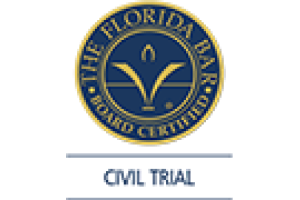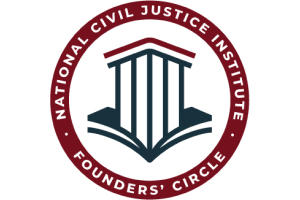Client Reviews
Determining Negligence of Injured Individual
Slip-and-fall injuries can have devastating consequences for victims and those closest to them. There are many situations in which damages may be recoverable.
Still, an injured person should be steeled for the possibility the defendant property owner will seek to blame a victim for his injury, to whatever extent possible.
At Associates and Bruce L. Scheiner, Attorneys for the Injured, we know such “comparative negligence” defenses are one way business and property owners try to skirt liability when a dangerous condition results in a serious or fatal accident. Proof of plaintiff negligence will not bar a claim entirely, but it could reduce the amount of overall compensation awarded.
Comparative Negligence
Florida follows the “pure comparative negligence” model, which holds that damages may be reduced by whatever percentage of fault the plaintiff held. So for example, if a gas station patron was jogging to the front doors and slips on an oil slick in the parking lot, a jury might find the business 70 percent liable and the patron 30 percent liable. If the overall damages awarded are $100,000, the patron would receive $70,000 from the defendant gas station.
We are fortunate in the sense that many other states take a far stricter approach. In a pure comparative negligence state (Florida is one of 13), even plaintiffs who are 99 percent responsible for what happened may still be entitled to collect 1 percent of the damages.
Most other states follow what is called the modified comparative fault model, which allows recovery in cases of comparative negligence – but only to a point, usually 50 percent or 51 percent. If plaintiff holds any greater percentage of fault, the claim will be barred.
Following an even stricter code are those states still practicing the “pure contributory negligence” model. In those places, a person who is even remotely negligent for his own injuries can collect nothing. That means if a plaintiff is only 1 percent responsible for what happened and the business or property owner is 99 percent responsible, the plaintiff is barred from collecting damages.
In any of these situations, it is in the plaintiff’s best interest not to comment on any potential fault prior to speaking with an experienced Fort Myers injury lawyer. We understand in some situations it’s natural to be self-deprecating after falling down because it can be embarrassing. However, admitting any part of the blame upfront could undermine a premises liability lawsuit.
Basis for Comparative Negligence Assertion in Slip-and-Fall
Because property owners know comparative negligence can reduce their liability, they will find any way they can to assert it.
The first element a defendant property owner will examine is the plaintiff’s status on site. Differing degrees of duty are owed by property owners to guests depending on their business there. For example, if a plaintiff is deemed a “business licensee,” he or she was invited on site to conduct business benefiting the property owner. As such, plaintiff is entitled to the highest degree of safety consideration. Trespassers, however, are owed the least consideration because property owners would not have reasonably anticipated their presence.
However, it’s worth noting that a business licensee can become a trespasser if he or she ventures into an area clearly not intended for patrons. For example, if a retail customer enters a door labeled “employees only” and subsequently slips and falls, the store may evade liability because the customer was “trespassing” in an area he or she should not have been – even if, just a few steps earlier, they had enjoyed protection as a “business invitee.”
The obviousness of a hazard is another element defendant property owners will weigh. The “open and obvious” doctrine holds the danger was obvious or discoverable to any person using reasonable caution. This principle assumes a reasonable person would take note of a glaringly obvious danger and act defensively to avoid injury.
A good example was outlined in the case of Dampier v. Morgan Tire & Auto, before Florida’s Fifth District Court of Appeal in 2012. There, plaintiff took his vehicle to a business for service, and while he waited, walked to a nearby fast-food restaurant. To access the public sidewalk, he walked across a raised landscape planting bed on the vehicle service business lot. He had no trouble getting there, but on the way back, tripped over a tree root jutting out of the surface in the plant bed, and fell head-first onto the concrete. He sued, arguing the plant bed was part of a clearly-defined walking path, and the company failed to keep it reasonably safe by removing stumps in the path or warning of the dangerous condition.
The company in turn denied the plant bed was a walking path, but argued even if it was, the condition was “open, obvious and apparent.” The trial court granted summary judgment to defendant shop, and that finding was affirmed by the 5th DCA, which cited many cases in which landowners aren’t liable when invitees walk on surfaces not designed for walking, and further, the danger was “so open an obvious” that the owner couldn’t be held liable.
One exception to the open and obvious doctrine is distraction. This is not merely the assertion that the injured plaintiff was distracted. Rather, the distraction has to be something that was foreseeable to the property owner. For example, the Illinois Supreme Court ruled in the 2014 case of Bruns v. City of Centralia that an elderly eye clinic patron looking at the doors in front of her, rather than the sidewalk directly underfoot, could not cite the distraction exception for failing to notice an open and obvious hazard. On the other hand, that same court ruled in Ward v. K Mart Corp. in 1990, that the exception was applicable to a patron of a retailer who was injured after walking straight into a concrete post at the customer entrance. At the time, he was carrying a bulky mirror out of the store, and the court ruled defendants should have foreseen that customers would be carrying bulky items out of the store, causing them to be “distracted” and fail to protect themselves from an otherwise open and obvious danger.
Failure to Mitigate
Another basis on which a defendant property owner may seek to evade responsibility in a slip-and-fall case is plaintiff’s failure to mitigate.
What this means is the plaintiff has a responsibility to take reasonable measures to reduce the risk or extent of injury even after an injury has occurred.
So for example, let’s say an injured victim seeks no medical treatment for a deep laceration caused by a fall. If that wound later becomes infected and results in amputation (an extreme scenario), it’ is possible the defendant could argue failure to mitigate.
Generally, failure to mitigate is argued as grounds for significantly reducing overall damages to which plaintiff is entitled, based on the theory injuries would not have been so severe had plaintiff acted within reason (i.e., sought immediate medical treatment, followed doctor’s orders, etc.).
Our experienced slip-and-fall lawyers are familiar with the kinds of common defenses employed in these cases, and we know how to effectively refute them.
If you or a loved one has been a victim of a slip-and-fall in Southwest Florida, contact Associates and Bruce L. Scheiner, Attorneys for the Injured, for a free and confidential consultation to discuss your rights. There are no fees or costs unless we win. Offices in Fort Myers, Cape Coral, Naples and Port Charlotte.
Call 800-646-1210 for a Free Consultation












